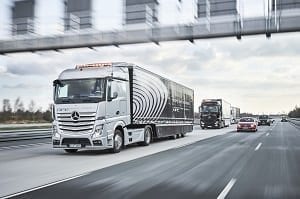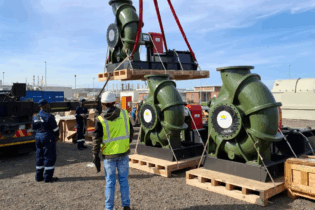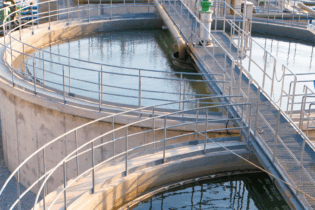The development and introduction of automated vehicle technology has sparked great interest within the trucking industry, particularly in Europe.
To support dialogue and cooperation, the Netherlands initiated the first European Truck Platooning Challenge (ETPC) last month, in which a number of truck brands with automated vehicles drove line astern (in a practice otherwise known as platooning) on public roads through several European cities to Rotterdam, in what was the world’s first ever cross-border initiative of its kind. Each manufacturer’s platoon departed from its respective home base or production location, meaning that Scania, which departed Södertalje in the south of Stockholm, had the longest journey at over 2 000 km. Its platoon drove through Sweden, Denmark and Germany before stopping in Zolder, Belgium, and Zwolle, Netherlands. Volvo left Gothenburg before driving through the same countries, stopping in Vilvoorde. Daimler commenced its journey from Stuttgart, while MAN did so from Munich. Meanwhile, Iveco and DAF departed Belgium, the former from Brussels and the latter from its production location in Westerlo.Truck platooning requires that a number of trucks, equipped with state-of-the-art driving support systems, closely follow one other. Interestingly, the trucks involved in the ETPC were driven not entirely by humans, but by a range of smart technologies, all connected through Wi-Fi.
Truck platooning is a practice that is as innovative as it is full of promise for the transport sector. The ETPC showed that platooning can improve traffic safety and reduces costs in the real world. It further demonstrated that, through technology, trucks are able to drive much closer to each other, at a constant speed, thereby lowering fuel consumption, emissions, and tailbacks, and enhancing traffic flows. All this while minimising the amount of space taken up on the road. But the impact of truck platooning was shown to go far beyond the transport sector, with automated driving and smart mobility offering realistic chances to optimise labour markets, logistics and general industry. South Africa should be envious of the relationship the road authorities of the five countries involved share. Unlike our industry’s oft tenuous relationship with government, the Europeans are in close contact. This meant they were able to share views on a number of issues, including the assessment of exemption applications, while providing the data to facilitate and guide the massive cross-country effort. Their unity represents the initial steps to greater roads authority harmonisation in Europe.







